The area that is now Oklahoma was once a place called Indian Territory. Beginning in the 1800s, the U.S. government designated the land in the Great Plains as a place where it could force indigenous peoples in order to make room for American settlers as they pushed west. All of the routes on the Trail of Tears led to what became Oklahoma.
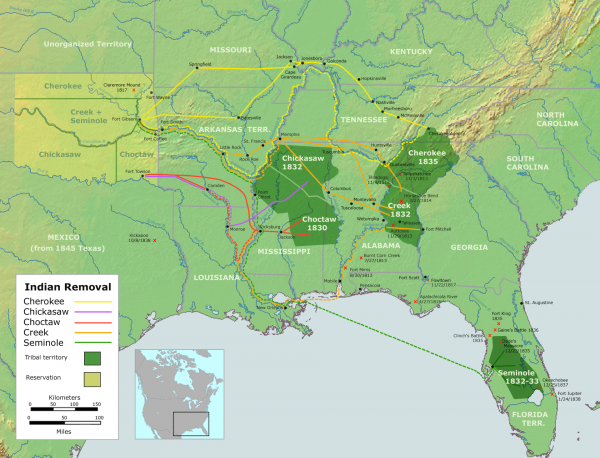
During the Civil War, some of the tribes based in Indian Territory made alliances with the South rather than the North. These tribes had roots in Southern states like Georgia and Florida, and they owned slaves and grew cotton.
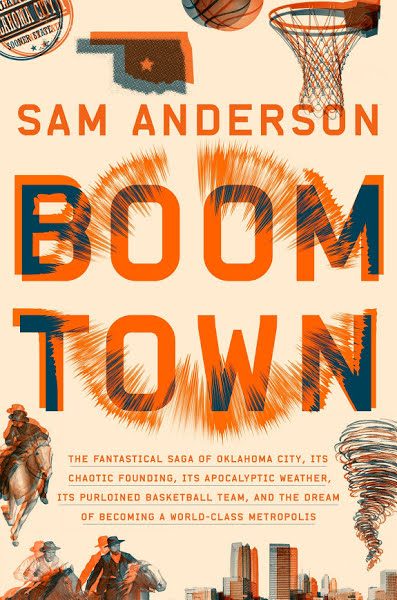
After the war, the U.S. government penalized the tribes that had aligned with the Confederacy, forcing them off their land in Indian Territory. This left an area of roughly 2 million acres — about half the size of Connecticut — suddenly empty. This patch of Indian Territory became known as the Unassigned Lands.
The Unassigned Lands would become a source of fascination for settlers in the surrounding areas, which Sam Anderson chronicles in his book Boom Town. The book explores the history of Oklahoma City — now located in the middle of what used to be the Unassigned Lands — from its bizarre founding to the present day.
The Unassigned Lands
In the 1860s and 1870s, white settlers from the areas around Indian Territory — like Kansas and Texas — started to realize that there was a vast piece of land in the middle of the United States that wasn’t claimed by anyone. They started agitating to be allowed to seize this land for free. These white settlers even began a series of illegal raids into the territory, sneaking into Indian Territory at night to get to that little center portion of the Unassigned Lands.

The Boomers

The leader of these illegal raiders — known as the “Boomers” — was a man named David Payne. He would ride around Kansas shouting speeches to struggling farmers about how there was a patch of America that belonged to the American people, but the government wouldn’t let them have it. Payne argued that they needed to band together to force the government to give it to them. He managed to convince many people to buy into his vision of Oklahoma as a sacred holy land for white settlers. Eventually, the U.S. government gave in.

Land Rush
This would eventually lead to the Land Rush of 1889, in which the U.S. government said that anyone who wanted a piece of Unassigned Lands could have it, if they played by certain rules.

Anyone who wanted to claim land could line up at the border of the Unassigned Lands, which was around 300 miles in circumference. Then, at noon on April 22, 1889, a signal would be given initiating the land grab. Settlers could rush in and hammer down wooden stakes to claim land — up to 160 acres out in the country and smaller patches in designated town sites.

Around 100,000 people showed up at the border to make a run for it. They came from all over the country and even the world, traveling from places like Liverpool and Hamburg. When the signal went off, it was total chaos. Anderson describes the scene: “I mean people are shooting guns to speed up their horses and accidentally shooting each other. Horses are dying of exhaustion. It’s … just about the wildest scene you can imagine.”
BOOMER… SOONER… BOOMER… SOONER
Some land grabbers cheated by starting long before noon. This faction of settlers became known as the “Sooners” — a term so deeply rooted in Oklahoma’s history that the University of Oklahoma football team is now called the Sooners. To this day if you go to a college football game, the crowd shouts “Boomer Sooner” back and forth.
After David Payne died, a man named William Couch took over the Boomer movement in his place, and he was among these cheaters. Although theoretically it should have taken more than an hour to reach the destination, the moment the Land Run started, William Couch and his cronies immediately leapt out of the bushes, jumped out of train cars, and fell out of trees to stake their claims. It was like a mythological origin story where people suddenly appeared out of the landscape.
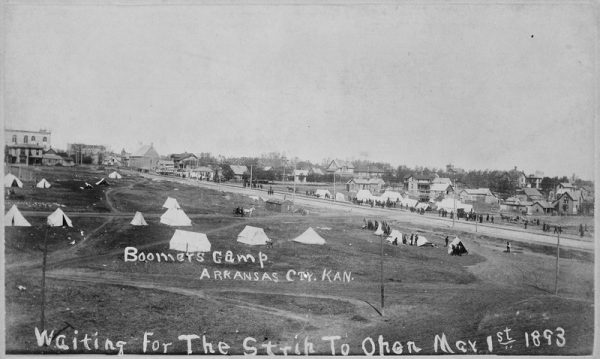
Couch and his men had brought surveying equipment — and they quickly began laying out streets and lots as they had planned them in the months leading up to the Land Run. In the days following Oklahoma City’s rapid settlement, town leaders would have to reckon with all the cheating that had happened during the Land Run. Who cheated and who didn’t? Who deserves to keep their land and who didn’t?
The Worst Way to Start a City
Because these new settlers were not necessarily city planners, they didn’t account for the things a city needs to function. They just plotted out their own land for their own private use without any foresight whatsoever. By the end of the Land Run, around 10,000 settlers had claimed basically every single patch of land that would become Oklahoma City.
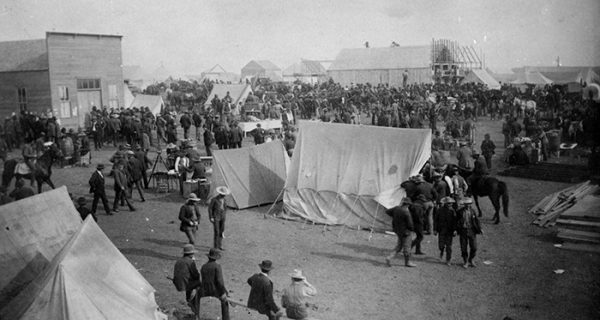
“It was just tent flap to tent flap,” says Anderson. “And you didn’t have any of the negative space that you really need for a city to work. You didn’t have streets, you didn’t have alleys.”
That was true except for the part of the city had been mapped out by William Couch and his Sooner compatriots. They had managed to sell certificates to own lots on the land that they had plotted out. But overwhelmingly the city was, according to Anderson, “just a giant absolute mess that could never, going forward, function as a place where humans live.”
Day Two
On the second day of Oklahoma City’s existence, two different leaders emerged. There was William Couch, who was the de facto leader of the Sooners. He had plotted and schemed in order to enrich himself and his cronies by selling land certificates. The second was Angelo Scott, who had come to Oklahoma during the Land Rush. He was a hyper-educated lawyer from Kansas, and he did not approve of the Sooner faction and their land schemes.
When the city’s new inhabitants awoke on the second day, chaos reigned. The new residents had to figure out some way to establish order in Oklahoma City. Angelo Scott decided to hold a big election to create a “citizens committee,” which would systematically survey the brand new city of 10,000 people. The committee would go lot by lot, adjudicating disputes and deciding who could stay on their land and who needed to go. In some cases, they would need to move settlers in order to create the streets and alleys that would allow the city to actually function.
They worked their way through each lot until they reached the edge of the Sooners’ part of town. There, William Couch and his men met them with Winchester rifles, refusing to participate in the town reorganization.

A compromise was eventually reached, but it required some creative engineering. The two parts of the city had been laid out at slightly different angles, meaning it would be difficult to stitch them together because the streets wouldn’t match up.
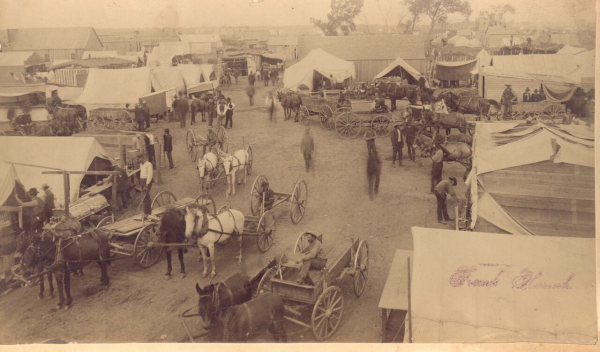
So the organizers agreed to create little diagonal streets (or “jogs”) to connect the two different street grids, thus uniting the city and avoiding a civil war between the two factions.
Angelo Scott referred to these jogs as “the scars of a bloodless conflict.” And these scars are still visible. Even today, you can still see some of them in the modern street grid of Oklahoma City.
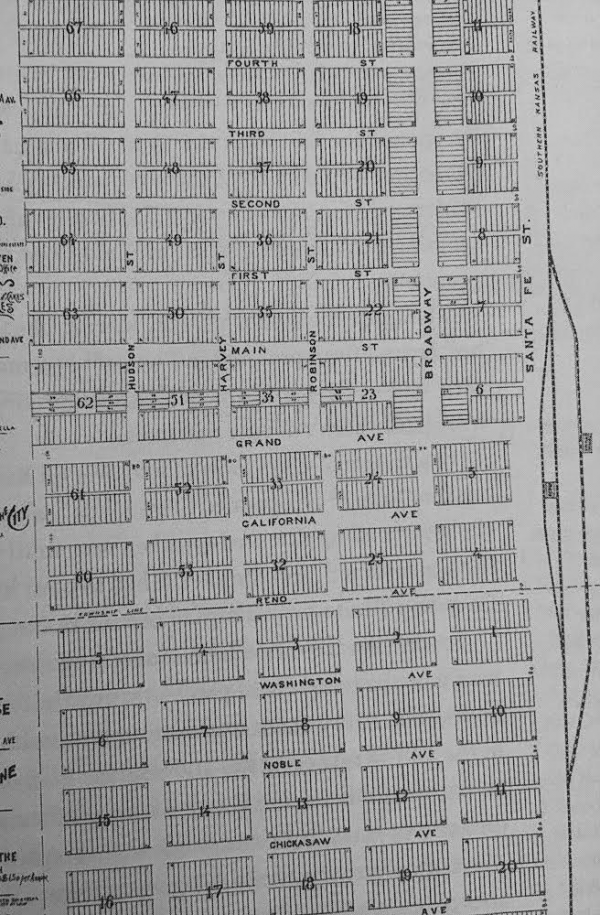





Comments (12)
Share
“Far and Away” anyone?
Small correction Howard Schultz killed the SuperSonics not the people of Oklahoma
And Boeing is no longer headquartered in Seattle.
You should see the “jogs” in Jefferson TX. One part of the city is on one grid and the other lies at a 45 degree angle. Jefferson once was a huge port city and is now a sleepy, charming, ghost-infused tourist town in East Texas.
Milwaukee has a very similar “jog,” only it’s three ways, split by the Milwaukee and Menomonee rivers. They were merged when the three areas founded by Solomon Juneau, Byron Kilbourn, and George H. Walker came together as one city.
They were intentionally off kilter so as to disagree with the others, and so established by the time of the merge, that the bridges run diagonal to the rivers.
This story of “coincidences” reminds me of a short essay by Isaac Asimov I read many years ago, called “The planet that wasn’t”. You can find a copy here: http://geobeck.tripod.com/frontier/planet.htm
I don’t know how the author found out about the amazing parallellisms that take place in the essay, and it truly defies belief. Who knows…maybe it deserves a full 99pi story
great feature about a historic event not in every history book!
anyway please note that the description given by the interviewee about the sound barrier (collision of molecules, etc.) is as wrong as can be ;-)
As a resident of a suburb on the north side of OKC, I was impressed by the story in the episode and learned about the jogs for the first time here, after living in the OKC area since 1986. An interesting follow up might be the story of how Oklahoma City became the capital of Oklahoma. It wasn’t the original.
Is there a transcript of the Supersonics part of this episode?
I’ve driven down the Milwaukee jog and it’s sick! You drive alongside the river and it doesn’t even feel like the US anymore while you’re driving, it feels like you’re in a village and you’re driving riverside.
It’s cool that Oklahoma city was split into two parts by their respective leaders. It reminds me of two different factions battling for land in a tug of war battle.
I love that Oklahoma is still chanting “Boomer Sooner” still to this day in their football games.